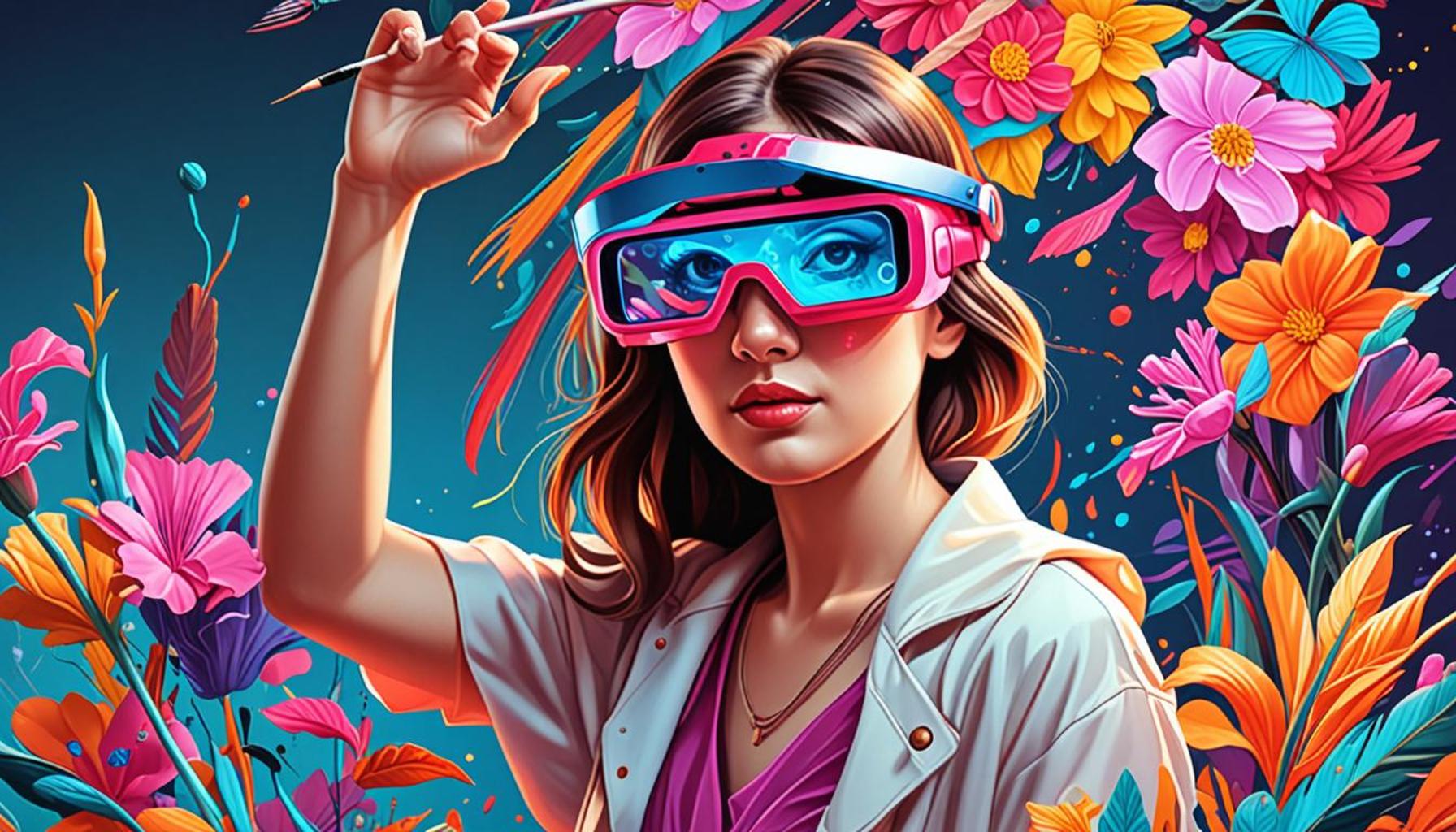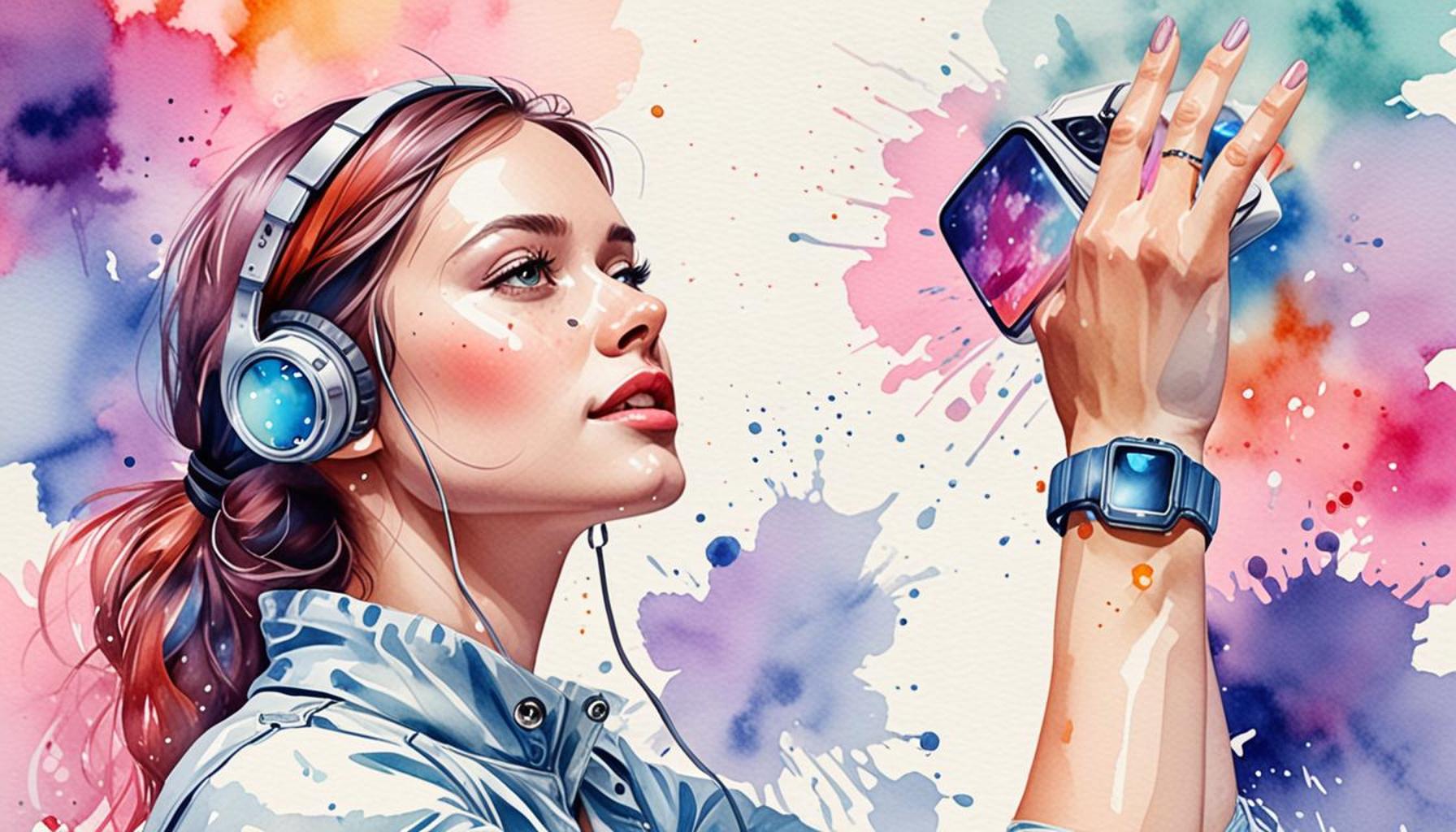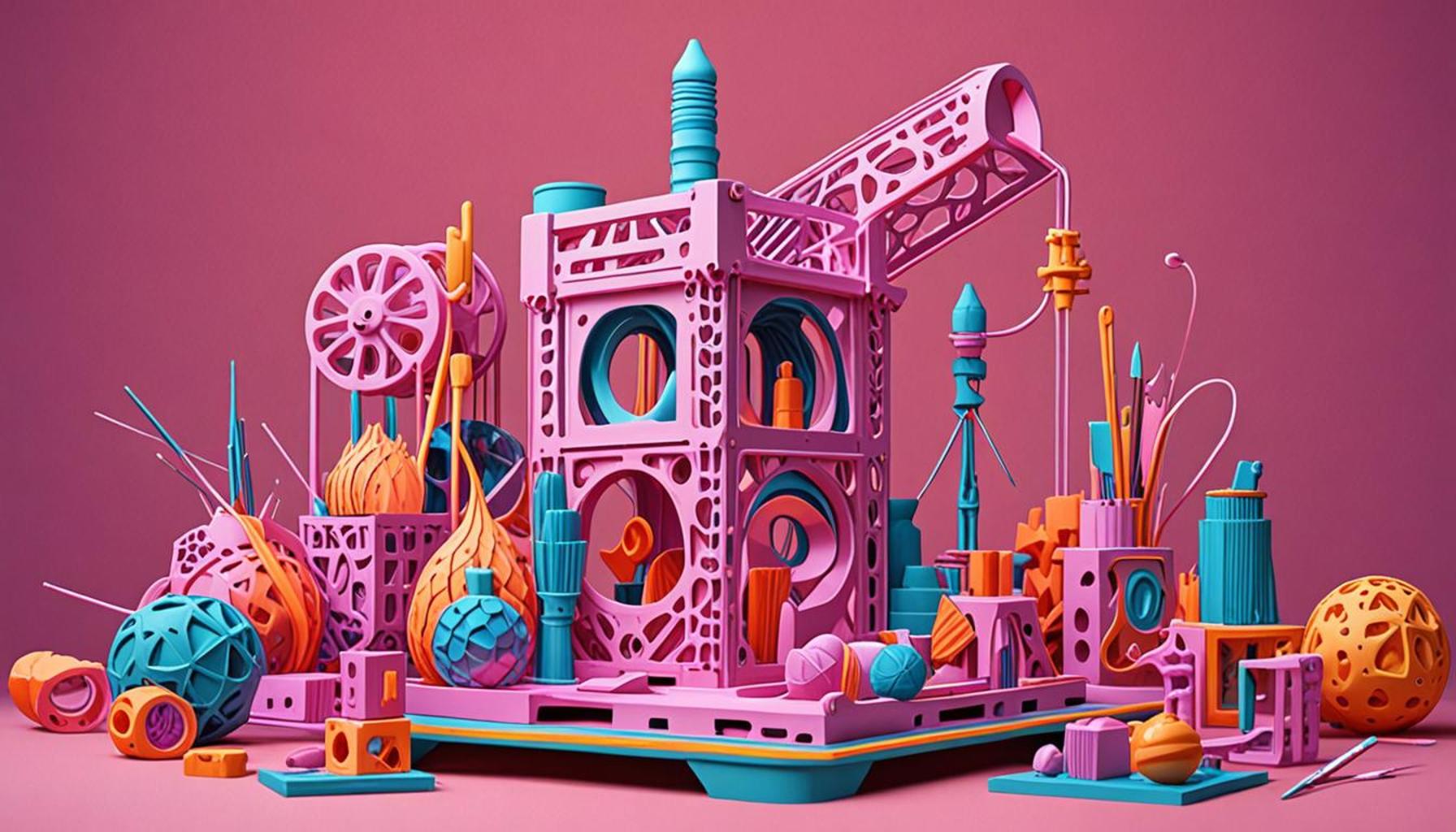Using Augmented Reality to Enhance Traditional Art Forms

Revolutionizing Art Through Technology
The intersection of technology and creativity has led to the rise of Augmented Reality (AR), a groundbreaking innovation that is reshaping how artists and audiences interact with art. By merging the physical world with digital enhancements, AR is creating entirely new avenues for artistic expression. This not only captivates viewers but also encourages artists to explore concepts and narratives that were previously difficult to convey in traditional formats.
In the realm of painting, for example, AR applications enable viewers to unlock a wealth of information by simply pointing their smartphones at a painting. They can access details about the artist’s intention, the techniques used, and even stories behind specific colors or brush strokes. This form of interactive learning transforms a standard gallery visit into an enlightening journey, bridging the gap between the spectator and the artwork.
When it comes to sculpture, the integration of AR has ushered in a new era of interactivity. Imagine walking around a statue and using an app that allows you to manipulate digital elements surrounding it, perhaps altering its colors, shapes, or textures in real-time. This engagement invites audiences not only to appreciate the physical form but also to interact creatively with it, fostering a deeper connection to the piece.
The performing arts also benefit immensely from AR technology. Imagine attending a live theater performance where the backdrop changes dynamically to reflect the emotions or actions occurring on stage. With virtual elements that shift in real-time in response to the actors, the experience becomes more immersive, challenging the traditional boundaries of storytelling in theater and dance.
The potential of AR extends beyond mere enhancement; it offers artists a unique toolkit to redefine their creative processes. By layering digital overlays onto their work, artists can create multifaceted narratives that resonate differently with diverse audiences. Museums and galleries across the United States are also embracing this trend, curating exhibitions that encourage interaction, such as the Smithsonian’s use of AR to highlight artifacts and engage visitors in novel ways.
As AR technology continues to advance, it also prompts critical discussions about authenticity, the role of the artist, and the very nature of art itself. This evolving dialogue challenges both creators and consumers to reconsider their perspectives on art in a digital age, urging them to explore how these enhancements might open up new realms of creative potential. Ultimately, the integration of Augmented Reality into traditional art forms not only enriches experiences but also inspires a collective reimagining of what art can be in our increasingly digital world.
DIVE DEEPER: Click here to discover the impact of augmented reality on art
Transforming Viewer Engagement
The use of Augmented Reality in traditional art forms is revolutionizing how audiences engage with artworks. No longer mere spectators, viewers can now actively participate in the artistic experience, fostering a richer understanding and appreciation of the pieces before them. This interactive approach appeals to a younger, tech-savvy demographic while igniting curiosity across all age groups.
One of the most captivating examples of this integration can be found in the realm of street art. Across urban centers in the United States, cities like Los Angeles and New York are home to numerous murals that come to life through AR. With a simple scan using a mobile device, a static mural can transform into an animated sequence, telling a layered story that reflects the artist’s vision. This immersive experience not only encourages street art appreciation but also engages the community by adding local narratives that resonate with audiences.
Furthermore, AR has the potential to democratize art by making it more accessible to the public. Traditional barriers to understanding art—such as art jargon or cultural context—can be shattered with informative digital layers. For instance, exhibitions at institutions like the Los Angeles County Museum of Art have begun incorporating AR experiences that allow visitors to delve deeper into each piece. These experiences provide:
- Artist Biographies: Instant access to the life stories of artists behind the works.
- Technique Tutorials: Interactive guides on how specific techniques were applied.
- Historical Context: Understanding the cultural and historical background of the artwork.
As technology advances, the investment in these initiatives is expected to grow. Institutions are recognizing that incorporating AR not only enhances the visitor experience but can also drive attendance. This shift is evident in the increased visitor numbers at exhibitions that utilize AR technologies, indicating that audiences are eager for more engaging and interactive experiences with art.
Moreover, the evolution of AR applications design allows for personalized art experiences. Using facial recognition technology and data tracking, museums can customize the AR content each visitor receives based on their interests or previous engagement. This level of personalization transforms the standard gallery experience into a tailored journey, significantly enhancing viewer satisfaction.
As more artists embrace AR technology, they find opportunities to collaborate with software developers and technologists to create content that aligns seamlessly with their vision. This fusion of art and technology ultimately leads to diverse forms of communication, inviting a broad international audience to experience art in unprecedented ways. Through the lens of AR, artists are not just crafting visual experiences; they are also curating dynamic storytelling platforms that invite deeper conversations about societal issues, culture, and human emotions.
In conclusion, the integration of Augmented Reality into traditional art forms is transforming how art is experienced and appreciated. By enhancing viewer engagement and accessibility, AR is paving the way for a new chapter in the art world that challenges conventions and embraces creative innovation.
Exploring the Benefits of Augmented Reality in Art
As the digital world intertwines with the tangible, augmented reality (AR) emerges as a revolutionary force in the art industry. This innovative technology not only breathes new life into traditional art forms but also bridges the gap between artists and audiences. Here, we delve into the key advantages of implementing AR to enhance artistic expression.
| Category | Details |
|---|---|
| Interactivity | AR allows viewers to engage with art pieces by interacting directly with multimedia elements, enriching their viewing experience. |
| Enhanced Storytelling | Through AR, traditional artworks can incorporate layered narratives that unfold via digital content, drawing audiences deeper into the story behind each piece. |
| Innovative Marketing | Artists can leverage AR for promoting their exhibitions, creating buzz and attracting larger audiences through interactive previews and immersive visuals. |
| Accessibility | AR can make art more accessible to wider audiences, allowing those unable to visit galleries to experience and enjoy artworks from anywhere in the world. |
The integration of AR not only enhances the appreciation of traditional artwork but also fosters a new dimension of creativity for artists, paving the way for future artistic advancements.
DISCOVER MORE: Click here to dive into innovative techniques
Bridging Art and Technology
The intersection of Augmented Reality (AR) and traditional art forms offers a fertile ground for innovation, leading to the emergence of unique artistic expressions. Artists are increasingly experimenting with AR to breathe new life into conventional mediums such as painting, sculpture, and photography. For instance, a pioneering project showcased at Art Basel Miami highlighted how AR can reinterpret classic masterpieces, enabling viewers to engage with the art in real-time through their smartphones.
This innovative approach not only reimagines the aesthetic experience but also encourages audiences to explore art from fresh perspectives. Take for example the globally recognized museum, the British Museum, which has utilized AR in its exhibitions to create interactive experiences around ancient artifacts. By superimposing digital elements over physical objects, the museum allows visitors to witness historical re-enactments, visualizing how artifacts were used in their prime. This use of AR reinforces educational aspects, making it easier for audiences to grasp complex narratives.
The prospects of AR technology in education extend beyond museums; schools and universities are beginning to integrate AR into art curriculums as well. By employing applications like Adobe Aero and Artivive, educators can guide students in creating interactive art projects that blend traditional skills with high-tech tools. This hybridization not only equips students with relevant skill sets but also invites experimentation, encouraging a new generation of artists to explore their creative boundaries.
Moreover, AR is redefining the commercial art landscape as galleries and art fairs adopt these technologies to enhance sales and promote artists. For example, during the recent Frieze Art Fair, galleries employed AR applications that allowed potential buyers to visualize how a piece would appear within their own homes. This personalization bridges the gap between art and consumer, offering a tailored purchasing experience that was previously nonexistent in the traditional art-buying process. The incorporation of AR into art transactions also allows for broader audience reach, as more buyers can access art remotely without needing to visit galleries physically.
Furthermore, AR has also paved the way for interactive public installations that can turn ordinary spaces into immersive art exhibitions. Initiatives like AR Bridges, which launched in various locations in the United States, utilize AR technology to enhance existing bridge structures by overlaying local histories and artistic designs. These projects not only beautify public infrastructures but also encourage community engagement by inviting residents to learn about their heritage.
In addition to enhancing the artistic experience, AR technology poses intriguing questions about ownership and authenticity in a digital age. As artists embed digital experiences into their works, debates around copyright and ownership rights emerge. This scenario opens discussions around what constitutes art and how copyright laws may evolve to accommodate these new formats. Are these augmented experiences mere supplements, or do they redefine the very essence of the work itself?
The ongoing dialogue around AR and traditional art forms remains thrilling as artists, technologists, and audiences navigate this new frontier. With possibilities limited only by imagination, the symbiotic relationship between art and technology is undoubtedly set to evolve, creating a dynamic cultural landscape rich with novel experiences.
DISCOVER MORE: Click here to uncover creative natural shelters
Looking Ahead: The Future of Art with AR
The integration of Augmented Reality (AR) into traditional art forms marks a transformative moment in the cultural landscape, opening pathways to innovative expressions and engagement strategies. As we’ve explored, this technology not only enhances but also redefines the interactions between audiences and art, making experiences more immersive and educational. Museums like the British Museum and events like the Frieze Art Fair demonstrate how AR can enrich our understanding of history and aesthetics, pushing the boundaries of how art is experienced and appreciated.
Furthermore, the introduction of AR into educational settings encourages a new generation of artists to explore their creativity and technical skills, preparing them for an evolving industry that increasingly values innovative approaches. As these emerging artists experiment with tools such as Adobe Aero and Artivive, we can anticipate an exciting evolution of artistic language that seamlessly fuses the digital and physical realms.
However, as AR reshapes the conversation around art ownership and authenticity, it raises essential questions that warrant deeper exploration. Authenticity in a digitized format poses challenges that must be navigated as AR becomes more embedded in the art world. This duality of enhanced experience and complexity suggests a future that is not only visually stimulating but also intellectually enriching.
In conclusion, the marriage of AR and traditional art forms presents endless possibilities for growth and engagement. As artists and institutions alike embrace this technology, we invite readers to stay curious and discover the fascinating interplay between creativity and innovation, paving the way for a vibrant and dynamic art world that is yet to come.


